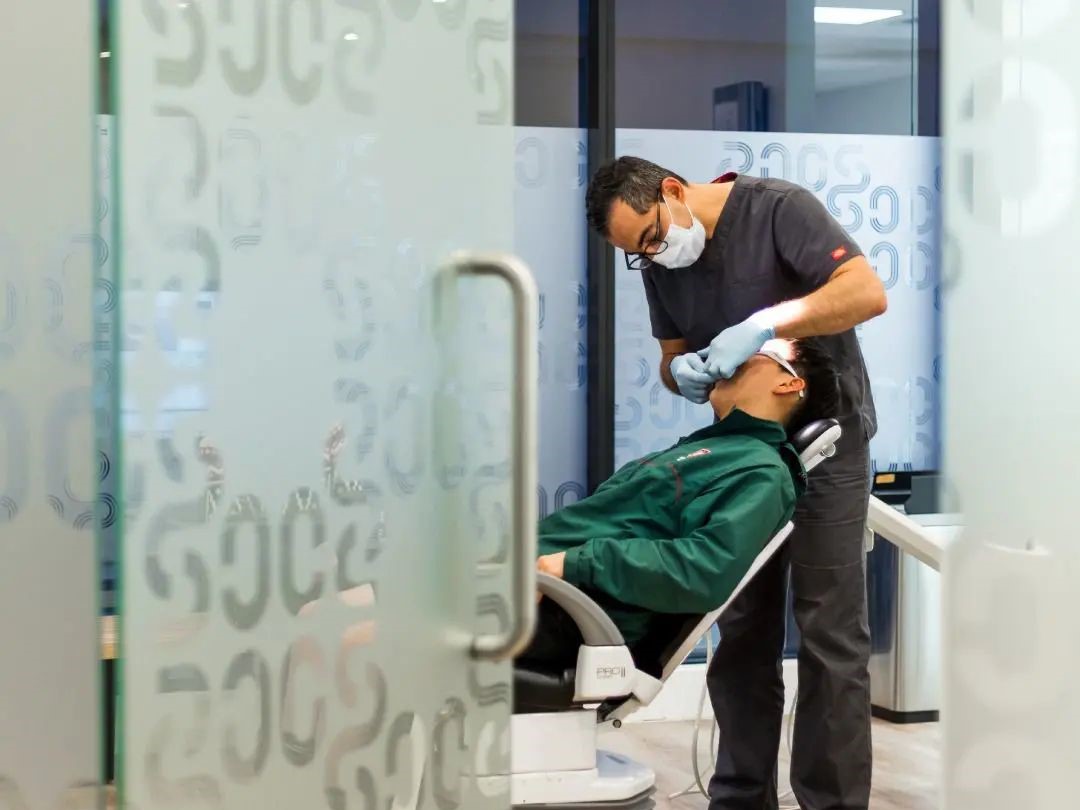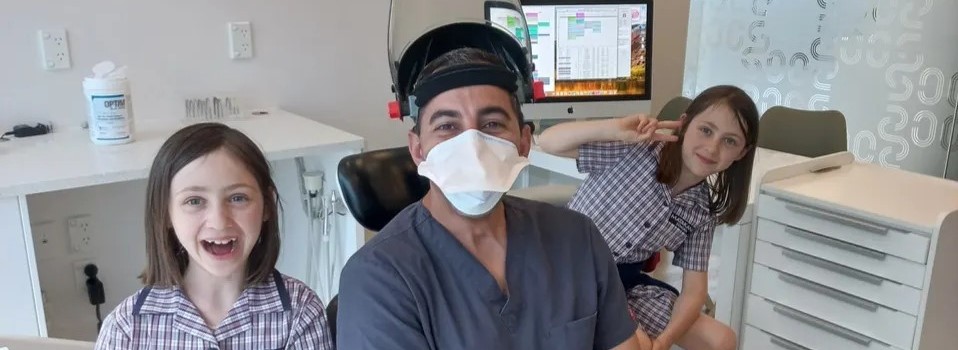When considering orthodontic treatment in Takapuna and the North Shore, understanding common orthodontic terminology can enhance your experience and knowledge. Here’s a comprehensive guide to help you navigate your orthodontic journey.
1. Orthodontics
Orthodontics is a specialised field of dentistry dedicated to diagnosing, preventing, and treating misaligned teeth and jaws. This branch focuses on improving both function and aesthetics, ensuring a healthier bite and a more attractive smile. Treatments may include braces, clear aligners, and various appliances.
2. Orthodontist
An orthodontist is a dentist who has undergone additional specialist training in orthodontics. They are experts in creating treatment plans to correct dental irregularities. Orthodontists in Takapuna / North Shore are equipped to provide personalised care tailored to each patient’s unique needs.
3. Diagnosis
Diagnosis in orthodontics involves assessing a patient’s teeth, jaws, and facial structure to identify any alignment issues. Orthodontists use clinical examinations, X-rays, and other diagnostic tools to develop effective treatment plans. Accurate diagnosis is crucial for successful orthodontic treatment.
4. Braces
Braces are orthodontic devices used to correct misaligned teeth and jaws. They consist of brackets attached to the teeth, connected by archwires that apply gentle pressure to move the teeth into the desired position. Braces are commonly used by patients of all ages seeking treatment in Takapuna.
5. Bracket
A bracket is a small metal or ceramic piece that is bonded to each tooth as part of the braces system. Brackets hold the archwire in place and facilitate tooth movement. They can be customised in different colours to suit individual preferences, making them a fun option for younger patients.
6. Archwire
The archwire is a thin metal wire that connects all the brackets in a braces system. It provides the necessary tension to guide teeth into their correct positions. Regular adjustments to the archwire during appointments help ensure continuous progress throughout the treatment.
7. Ligature
A ligature is a small rubber band or wire that secures the archwire to the brackets. Ligatures come in various colours, allowing patients to express their personality while wearing braces. They are essential for keeping the components of the braces system together.
8. Retainer
A retainer is a custom-made device worn after braces are removed to keep teeth in their new positions. Retainers are critical for maintaining the results of orthodontic treatment and are often used by North Shore Orthodontists to prevent relapse.
9. Palate Expander
A palate expander is an orthodontic appliance used to widen the upper jaw. This device is particularly useful for children and adolescents, as it creates more space for teeth to align properly. Palate expanders can help correct crossbites and improve overall dental health.
10. Malocclusion
Malocclusion refers to a misalignment of the teeth when the jaws are closed. This condition can lead to various dental issues, including difficulty chewing, speech problems, and increased wear on teeth. Orthodontic treatment is often necessary to correct malocclusion and achieve a healthy bite.
11. Overbite
An overbite occurs when the upper front teeth significantly overlap the lower front teeth. This common dental issue can cause wear on teeth and jaw discomfort. Orthodontists in Takapuna and the North Shore can develop treatment plans to address overbites effectively.
12. Underbite
An underbite is the opposite of an overbite, where the lower teeth extend beyond the upper teeth when the mouth is closed. This misalignment can impact chewing and speech, often requiring orthodontic intervention to correct.
13. Crossbite
A crossbite occurs when upper teeth sit inside the lower teeth during closure. This condition can lead to uneven wear and jaw discomfort. Orthodontic treatment, such as braces or expanders, may be necessary to correct a crossbite.
14. Treatment Plan
A treatment plan outlines the specific steps and methods that will be used to address a patient’s orthodontic issues. Each plan is personalised based on the patient’s unique needs and can include various types of appliances and timelines for treatment.
15. Tooth Movement
Tooth movement refers to the gradual shifting of teeth into their correct positions using orthodontic devices. This process is carefully controlled by the orthodontist to ensure effective and safe alignment.
16. Adjustment Appointment
An adjustment appointment is a scheduled visit where the orthodontist modifies the braces or appliances to facilitate tooth movement. Adjustments may include tightening the archwire, changing ligatures, or other necessary changes to ensure continued progress.
17. Oral Hygiene with Braces
Maintaining good oral hygiene is crucial for patients with braces. Special care must be taken to clean around brackets and wires to prevent plaque buildup and cavities. Orthodontists often provide guidance on effective brushing and flossing techniques for their patients in Takapuna.
18. Emergency Orthodontic Care
Emergency orthodontic care addresses urgent issues that may arise during treatment, such as broken brackets or lost wires. It’s important to contact your orthodontist promptly to resolve any emergencies and ensure your treatment stays on track.
19. Orthodontic Insurance
Orthodontic insurance helps cover the costs associated with orthodontic treatment. Understanding your insurance benefits and options can help you plan for the expenses involved in your treatment on the North Shore.
20. Payment Plan
A payment plan allows patients to manage the cost of their orthodontic treatment over time. Many orthodontists offer flexible payment options to accommodate different budgets, making treatment more accessible.
21. Separation
Separation involves creating space between teeth to prepare for the placement of bands or other orthodontic appliances. This process is often completed before the installation of braces.
22. Bands
Bands are metal rings that are placed around the back teeth (molars) to anchor braces. They provide added stability and support during treatment, ensuring effective movement of the teeth.
23. Elastic Bands
Elastic bands, or rubber bands, are used in conjunction with braces to apply additional pressure for specific tooth movements. They are often attached to brackets to help align the teeth and correct bite issues.
24. Invisalign
Invisalign is a popular alternative to traditional braces, consisting of clear aligners that gradually shift teeth into alignment. These removable aligners are customised for each patient and are an excellent option for those seeking discreet treatment in Takapuna. Learn about costs here.
25. Clear Aligners
Clear aligners are similar to Invisalign and provide a more aesthetic way to straighten teeth without the use of traditional metal braces. They are transparent, removable, and custom-made for each individual, making them a popular choice for many patients.
26. Dentin
Dentin is the layer of tooth tissue beneath the enamel. It is sensitive to pressure and plays a significant role in tooth movement during orthodontic treatment. Understanding dentin is important for orthodontists when planning treatment.
27. Enamel
Enamel is the hard, outer layer of a tooth that protects it from decay. Maintaining healthy enamel is essential during orthodontic treatment to prevent dental issues, such as cavities and sensitivity.
28. Interproximal Reduction (IPR)
Interproximal reduction (IPR) is a technique used to create space between teeth by removing a small amount of enamel. This method is particularly beneficial for patients with crowded teeth and is often employed to facilitate better alignment.
29. Cephalometric X-ray
A cephalometric X-ray is a type of radiographic image used to evaluate the relationships between teeth, jaws, and facial structures. This diagnostic tool helps orthodontists develop effective treatment plans for patients on the North Shore.
30. Panoramic X-ray
A panoramic X-ray provides a comprehensive view of the entire mouth, including all teeth and jaws. This imaging technique is valuable for diagnosing orthodontic issues and planning treatment.
31. Retention
Retention refers to the phase following active orthodontic treatment where retainers are worn to maintain teeth in their new positions. This period is crucial for preventing teeth from shifting back to their original alignment.
32. Functional Appliances
Functional appliances are devices that help modify the growth and position of the jaw. They are often used to correct bite issues in children and adolescents, promoting proper dental alignment.
33. Space Maintainer
A space maintainer is an orthodontic appliance used to hold the space left by a lost baby tooth until the permanent tooth erupts. This device helps preserve dental alignment and spacing for children in Auckland.
34. Extraction
Extraction is the removal of a tooth, which may be necessary to alleviate crowding or correct bite issues. Orthodontists carefully consider extractions during treatment planning to ensure optimal results.
35. Clinical Crown
The clinical crown is the visible portion of a tooth above the gum line. It is important for orthodontists to understand the clinical crown’s structure when planning treatments that involve tooth movement.
36. Eruption
Eruption refers to the process by which teeth emerge through the gums. Understanding the timeline of tooth eruption helps orthodontists plan effective treatments, especially for growing children.
37. Impacted Tooth
An impacted tooth fails to emerge properly and may require surgical intervention. Orthodontic treatment may be needed to correct the position of impacted teeth and align the bite.
38. Occlusion
Occlusion refers to how the upper and lower teeth fit together when the mouth is closed. Achieving proper occlusion is a key goal of orthodontic treatment, ensuring a functional and aesthetically pleasing bite.
39. Anterior Teeth
Anterior teeth refer to the front teeth, including incisors and canines. Orthodontic treatments often focus on these teeth, as they play a crucial role in appearance and function.
40. Posterior Teeth
Posterior teeth are the back teeth, including premolars and molars. Proper alignment of these teeth is essential for effective chewing and overall dental health.
41. Diastema
A diastema is a gap or space between two teeth, often occurring between the front teeth. While some people may find diastemas charming, others may seek orthodontic treatment to close the gaps for aesthetic reasons.
42. Retention Period
The retention period is the duration during which retainers are worn after braces are removed. This phase is vital for ensuring that teeth remain in their correct positions as they settle into their new alignment.
43. Periodontal Health
Periodontal health refers to the health of the gums and supporting structures around the teeth. Maintaining good periodontal health is essential during orthodontic treatment to prevent complications and ensure successful outcomes.
44. Appliance
An appliance is any orthodontic device used to assist in moving teeth or modifying jaw positions. Examples include braces, retainers, and expanders, each serving a specific purpose in treatment.
45. Tooth Contouring
Tooth contouring involves reshaping the teeth to improve their appearance and fit. This procedure may be performed as part of orthodontic treatment to enhance aesthetics after alignment.
46. Orthopedic Treatment
Orthopedic treatment focuses on correcting skeletal discrepancies and jaw relationships, often in growing children and adolescents. This type of treatment may be combined with orthodontic methods to achieve optimal results. Click here to learn more about what to expect at your first orthodontic appointment.
47. TADs (Temporary Anchorage Devices)
Temporary Anchorage Devices (TADs) are small screws or plates that provide additional support during tooth movement. They allow orthodontists to achieve more complex movements while minimising the need for extractions.
48. Clinical Visit
A clinical visit is an appointment with the orthodontist for evaluation, treatment, or adjustments. Regular clinical visits are essential for monitoring progress and making necessary changes to ensure successful outcomes.
Conclusion
Understanding these common orthodontic terms can empower you to engage more effectively in your orthodontic treatment. Whether you are considering braces, Invisalign, or other orthodontic options in Takapuna and the North Shore, being informed can help you make confident decisions about your dental care. If you have any questions or need more information, don’t hesitate to reach out to your local orthodontist.
Shakespeare Orthodontics: Creating a Smile You Love
4 Auckland Locations: Takapuna (North Shore), Epsom, Warkworth, Howick
Request an Appointment
Ph: 09 2166 888
More Orthodontist Tips from the North Shore
How to Tell if You Need Braces
Common Orthodontic Terms Explained



